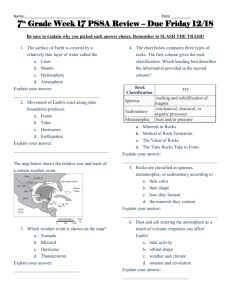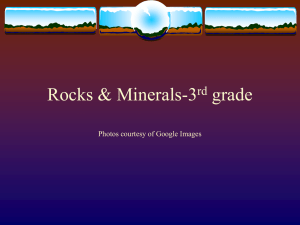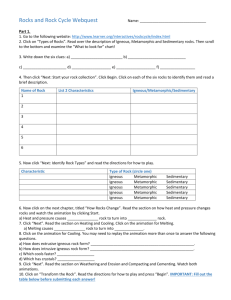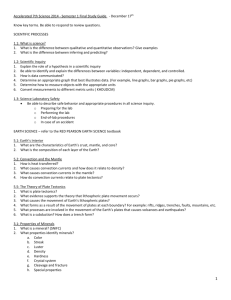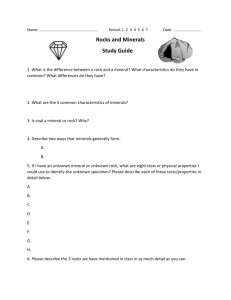Igneous – Metamorphic – and Sedimentary Rocks
advertisement
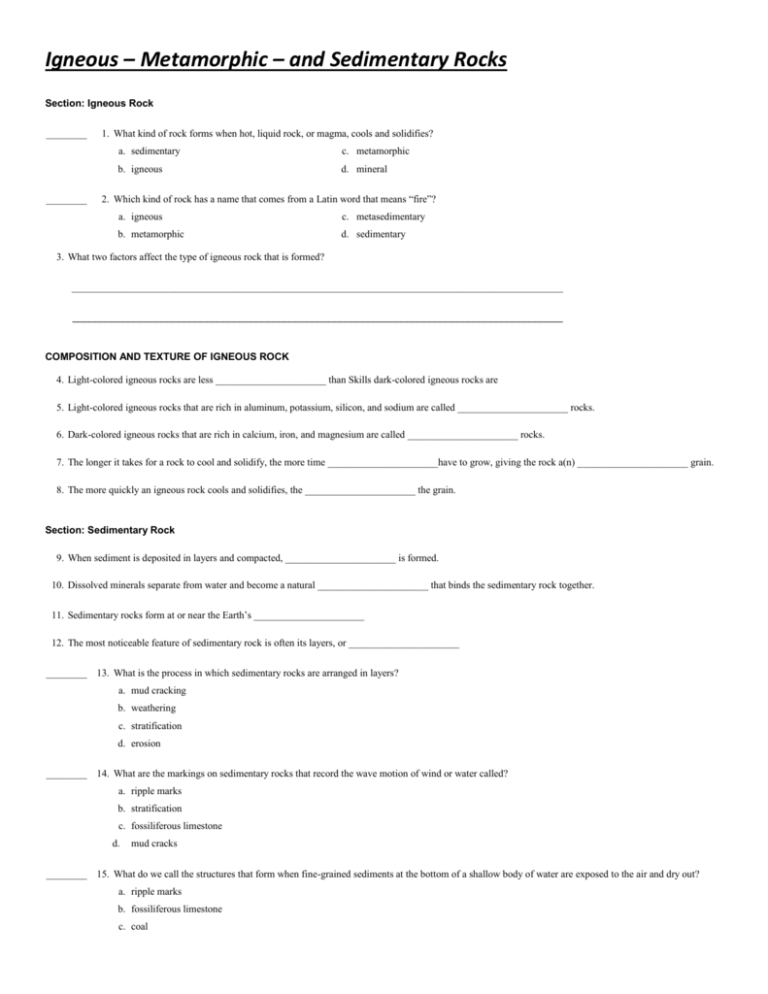
Igneous – Metamorphic – and Sedimentary Rocks Section: Igneous Rock ________ ________ 1. What kind of rock forms when hot, liquid rock, or magma, cools and solidifies? a. sedimentary c. metamorphic b. igneous d. mineral 2. Which kind of rock has a name that comes from a Latin word that means “fire”? a. igneous c. metasedimentary b. metamorphic d. sedimentary 3. What two factors affect the type of igneous rock that is formed? ________________________________________________________________________________________________ ________________________________________________________________________________________ COMPOSITION AND TEXTURE OF IGNEOUS ROCK 4. Light-colored igneous rocks are less ______________________ than Skills dark-colored igneous rocks are 5. Light-colored igneous rocks that are rich in aluminum, potassium, silicon, and sodium are called ______________________ rocks. 6. Dark-colored igneous rocks that are rich in calcium, iron, and magnesium are called ______________________ rocks. 7. The longer it takes for a rock to cool and solidify, the more time ______________________have to grow, giving the rock a(n) ______________________ grain. 8. The more quickly an igneous rock cools and solidifies, the ______________________ the grain. Section: Sedimentary Rock 9. When sediment is deposited in layers and compacted, ______________________ is formed. 10. Dissolved minerals separate from water and become a natural ______________________ that binds the sedimentary rock together. 11. Sedimentary rocks form at or near the Earth’s ______________________ 12. The most noticeable feature of sedimentary rock is often its layers, or ______________________ ________ 13. What is the process in which sedimentary rocks are arranged in layers? a. mud cracking b. weathering c. stratification d. erosion ________ 14. What are the markings on sedimentary rocks that record the wave motion of wind or water called? a. ripple marks b. stratification c. fossiliferous limestone d. mud cracks ________ 15. What do we call the structures that form when fine-grained sediments at the bottom of a shallow body of water are exposed to the air and dry out? a. ripple marks b. fossiliferous limestone c. coal d. mud cracks Section: Metamorphic Rock ________ 16. Which rock’s name comes from the Greek words for “changed” and “shape”? a. metamorphic b. sedimentary c. fossiliferous limestone d. igneous ________ 17. What kind of rocks are rocks in which the structure, texture, or composition have been changed? a. fossiliferous limestone b. igneous c. metamorphic d. sedimentary ________ 18. What force or forces can create metamorphic rocks? a. cooling b. heat and pressure c. melting d. erosion ______19.Which of the following is NOT a property of an index mineral? a. forms only at a certain temperature b. forms only in sedimentary rock c. forms only at certain temperatures d. forms only in metamorphic rocks ________ 20. Which of the following is not an example of a mineral that indicates that a metamorphic rock was formed at a great depth and under extreme heat and pressure? a. chlorite b. mica c. magma d. garnet ______ 21.What do we call metamorphic rocks in which mineral grains are NOT aligned? a. foliated b. intrusive c. nonfoliated d. extrusive ________ 22. What is the process in which a mineral changes composition during metamorphism called? a. recrystallization b. nonfoliation c. foliation d. deformation ________ 23. After quartz limestone has recrystallized, the new rock is called a. schist. b. gneiss. c. slate. d. quartzite.




